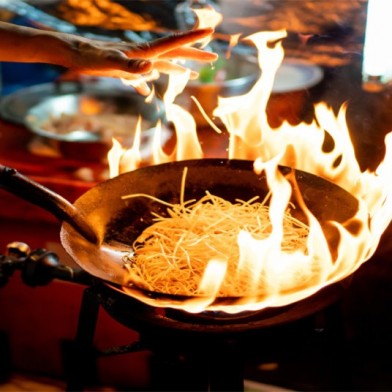India's smallest state is often synonymous with picturesque beaches, historic churches and wild party life. This was not the case in 1510 when the Portuguese first docked their boats on the coasts of Goa in Estado da India (Portuguese India). The following 450 years would alter the course of this coastal beauty and shape its architecture, religion and food amongst other things.
When the Portuguese arrived, their ships only contained enough supplies to last the journey. Soon, they ventured out to seek local produce and tried to recreate the dishes served back home. However, this was not a complete success as they often had to substitute a few ingredients with ones they found locally. Eventually, the appetite of colonizers met the local kitchen and Portuguese dishes were reborn in Goa with an Indian flair.
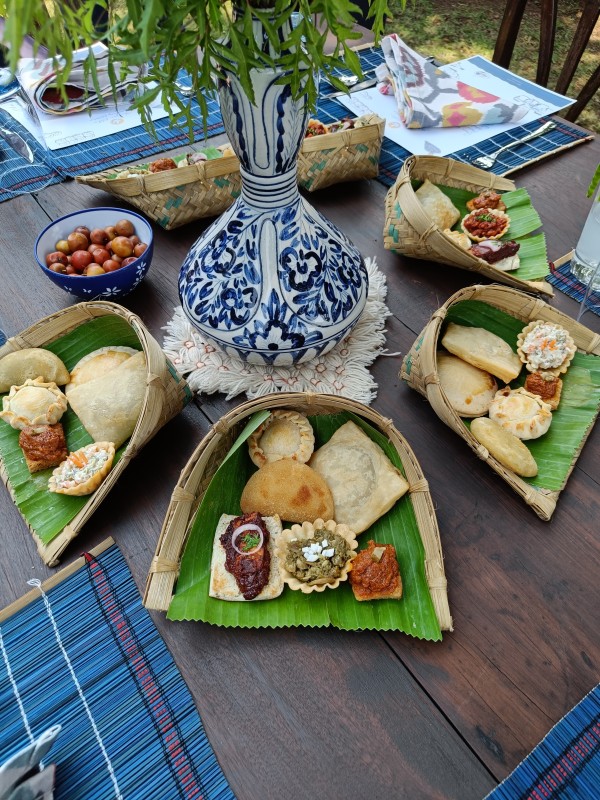
An assortment of Goan dishes. Image: Supplied/Oliver Fernandes
They were also responsible for introducing tomatoes, potatoes, and chillies; ingredients that play a crucial role in everyday Indian meals. Oliver Fernandes, the owner of The Goan Kitchen, who works on preserving the culinary heritage and presenting it beyond its commercial appearance, weighs in. “The Portuguese also introduced Goans to leavened bread, and due to this, bread is a common denominator in most of their meals,” he says. Since the Goan cooks were skilled in cooking dishes with meat, they landed in the kitchens of British rulers in the 1800s.
Today, we will explore a few dishes with Portuguese influence that often feature on Sundays, weddings or special occasions in Goan homes.
Vindalho/Vindaloo
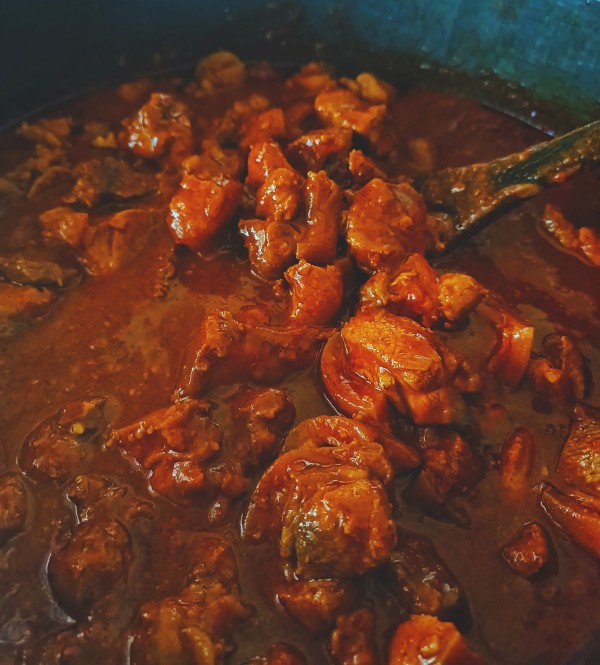
Pork Vindalho by Marian N D'Costa
Perhaps one of the most popular dishes appearing on menus across the world. Often, this dish can be seen masquerading as a red-looking tangy curry that gets passed for Vindaloo with the occasional potato making an appearance in the dish. The original Portuguese dish was named Carne de vinha d'alhos which translates to the three ingredients it called for – meat, wine vinegar and garlic. Today, most Goan households cook this dish with gusto, each using their own recipe with the most common ingredients being cinnamon, garlic, onion, ground red chillies, cloves, black pepper, ginger and tamarind.
Sorpotel
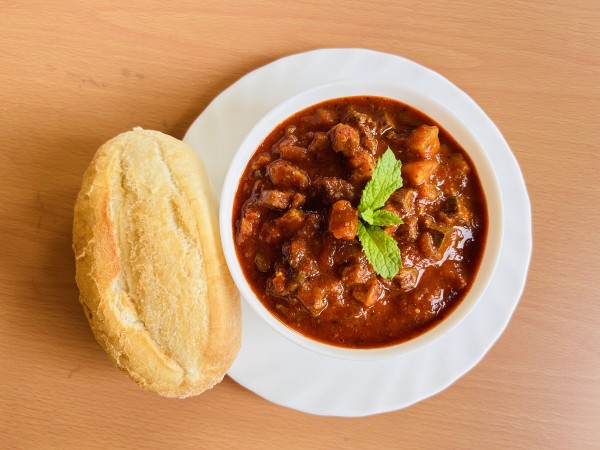
Sorpotel with Undo bread by Chef Alvino Fernandes
When the Portuguese introduced Catholicism in Goa, they also brought with them pork and vinegar. Sorpotel wasn’t really a Portuguese invention but instead passed onto them by the colonized Africans who fashioned this dish using the less-used innards, offal, blood and wine vinegar. Once the dish landed in the Indian kitchen, the wine vinegar was replaced by the toddy, fermented liquor reaped from palm trees. Today, most households skip the blood, offal and innards as it is a mission to source them but using the vinegar is vital to the dish not only for the flavour but to preserve the dish. If you were to eat Sorpotel today, you would start cooking it 3 days ago allowing the flavours to grow rich. Marian N D’Costa of Aiyo Patrao Bandra calls it her death row meal. According to her the flavour of the dish comes from the special cuts of pork and ingredients like coconut toddy vinegar, chillies and Goan coconut jaggery. “Some even add a splash of Feni – potent liquor unique to Goa, made from cashew fruit,” she says.
Chouricos/Choris and Poee
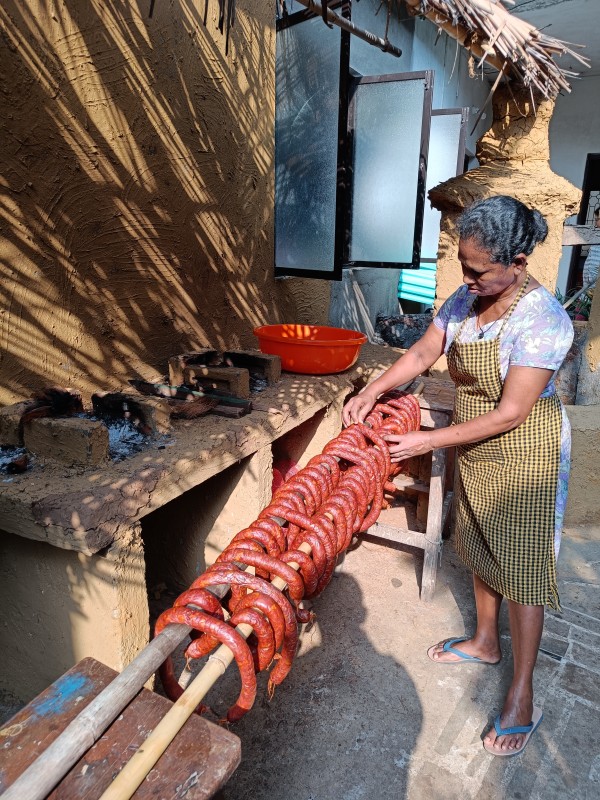
Choris in the making by Oliver Fernandes
What a good pick-me-up hot dog is to Americans, Choris and Poee is to Goans. Inspired by the quintessential Chorizo, Goan Chouricos was a result of combining Indian flavours with the original recipe. The local cooks used chillies, toddy vinegar and native spices and served it with Poee, a traditionally baked bread widely available in Goa. Making the Chouricos is a family affair with all hands on deck for mixing the minced meat with spices, filling them in casings and smoke drying and/or sun drying them which ultimately gives it a unique tangy flavour. Poee is also a variation of the Portugues Pão. Instead of traditional yeast, Goan poders (derived from Padeiro meaning bakers in Portuguese) used toddy for fermentation creating Poee, a bread that resembles a Pita. Another common bread you see in bakeries is the Pao (resembling a bread roll). You can see the smallest bakeries serving these breads with cooked chorizo meat as the breads soak up all the juices from the meat imparting flavour in each bite. According to Marian N D’Costa, every Goan has their coveted Choris lady whom they swear by.
Recheado
When Mackerels are in season, lanes of Goa are pervaded with the scent of Recheado, a fiery red paste used to cook the fish. In Portuguese, Recheado simply translates as ‘stuffed’. Usually, a whole Mackerel or Pomfret is slit in the centre and the Recheado masala, comprising of ground Kashmiri red chillies, cumin, garlic, ginger, ground coriander seeds, tamarind and vinegar, is generously stuffed and shallow fried resulting in a delectable dish. The folklore suggests that Recheado was introduced in Goa due to the absence of refrigeration in the 16th Century. Using vinegar in the marinade acted as a preservative and ensured the fish retains its quality. While the origins are unclear, Recheado is a dish that has made its way into the hearts of the Goans.
Bebinca
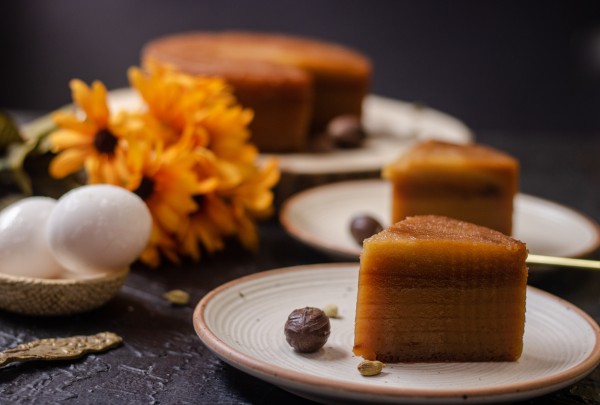
Bebinca by Oliver Fernandes
Around the 17th century, it became a common practice to use egg whites to starch the clothes. Instead of throwing the egg yolks away, a nun named Bebiana mixed them with flour, sugar and coconut milk and baked the pudding into 7 layers of heaven, representing the 7 hills of Lisboa. Today, the number of layers ranges from 7 to sixteen, with added cardamon, nutmeg or cinnamon to enhance the flavour. According to Oliver Fernandes, Bebinca is best made in Tizel, a clay pot acting as an oven. Burning coconut shells and husks are placed on top providing heat and imparting a smoky flavour to the dish. “The sight of Bebinca on the dinner table was a sign of culinary supremacy. Bebinca is a hot topic of discussion during special occasions and is a symbol of the culinary prowess of the home chef whose hands created this dish. If not cooked at home, Bebinca would be bought from a select few ladies in the area who have made a name for themselves through the quality of their Bebinca,” he adds. The dish takes around 8 to 12 hours, as each layer is cooked one after the other resulting in sugar caramelising and deepening the flavour, earning the name ‘Queen of Goan Desserts’.
- Asia Media Centre


